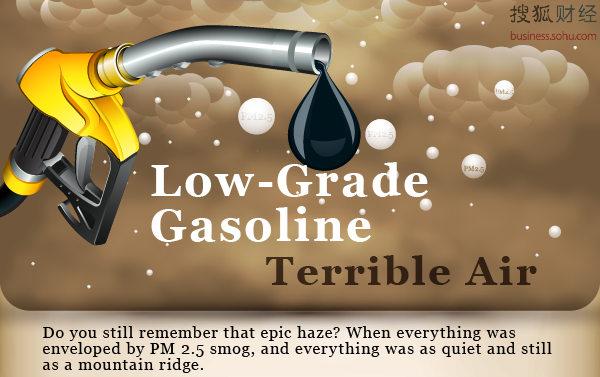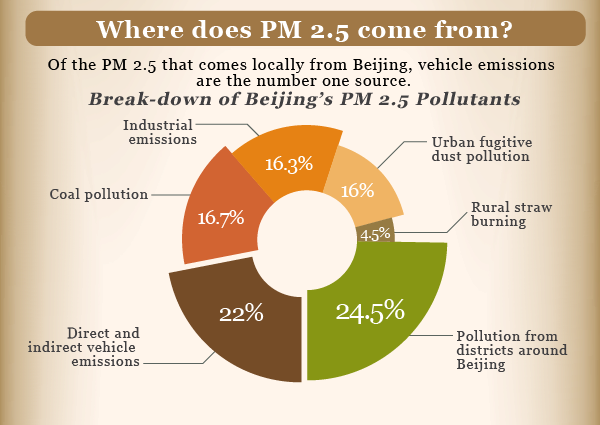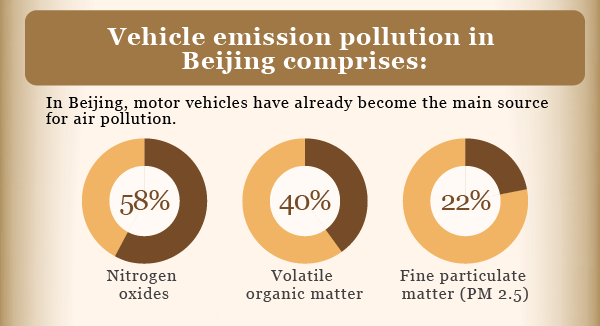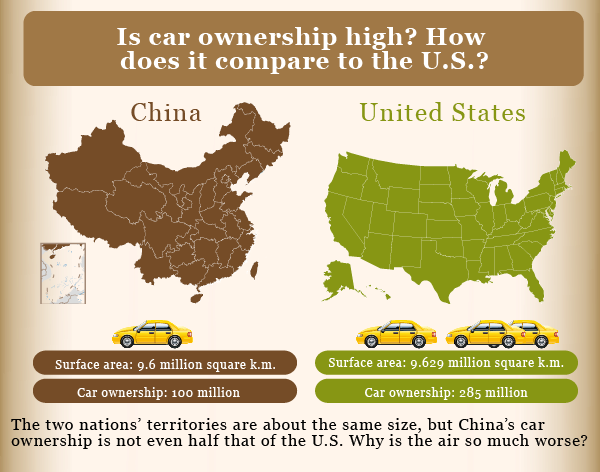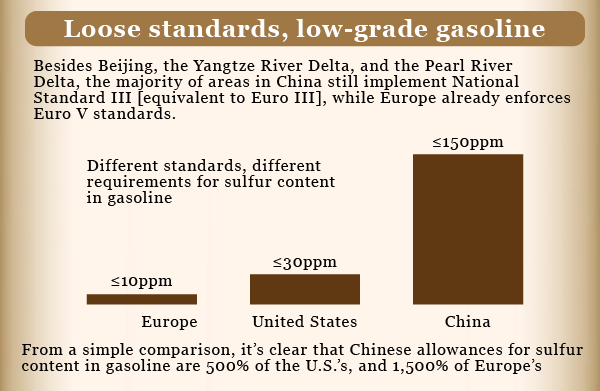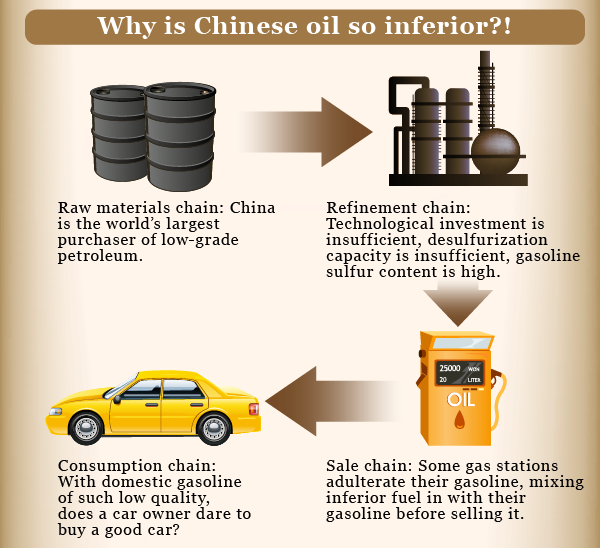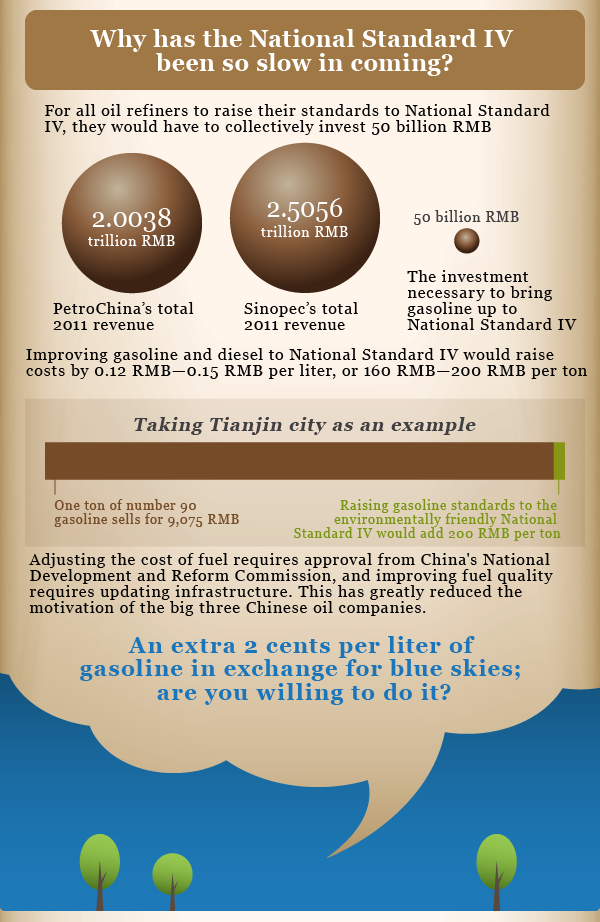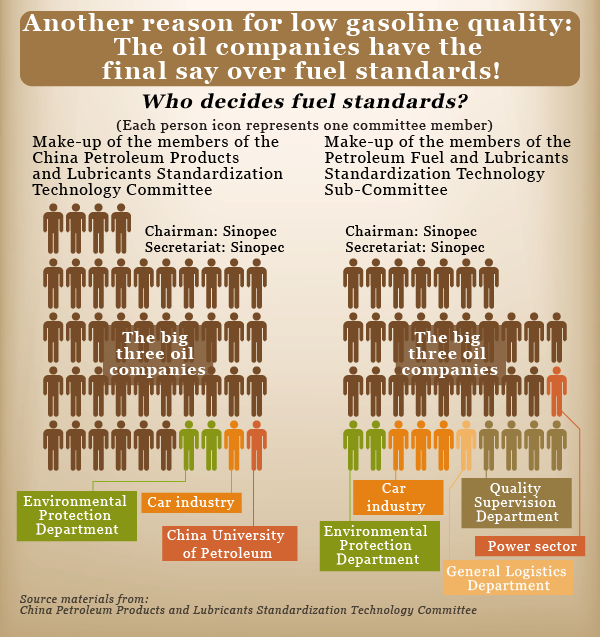In January alone, a stifling and noxious haze twice enveloped the Chinese capital of Beijing, pushing air quality indexes literally off the charts and inciting widespread outrage both on-line and off. Pollution—and the outcry surrounding it—has gotten so severe that, according to The New York Times, Beijing has taken emergency measures which “include temporarily shutting down more than 100 factories and ordering one-third of government vehicles off the streets.”
But China’s Web users continue to search for answers. Sohu Business recently released an infographic which seeks to explain the origin of Beijing’s airborne pollutants, on Sina Weibo, a Chinese micro-blogging platform. Tea Leaf Nation translates.
Although the image’s inclusion of Taiwan and the Senkaku/Diaoyu Islands in China’s territory are sure to rankle some readers, its core insight is a powerful one. It points a finger squarely at China’s state-run oil companies, in particular their failure to invest in desulphurization. The graphic has been shared by more than 10,000 Weibo users since its January 29 release—and on February 2, oil giant Sinopec announced plans to upgrade twelve of its refining facilities by the end of 2013.
